by Madeline Bocaro ©
© Madeline Bocaro, 2020. No part of this site may be reproduced in whole or in part in any manner without permission of the copyright owner.
This is an excerpt from my Yoko Ono biography…

An all-embracing look at Yoko Ono’s life and work, in stunning detail.
Web site:
Order:
Hard cover books are exclusively available at conceptualbooks.com
Reviews:
https://inyourmindbook.com/reviews/
http://bookbaby.conceptualbooks.com
and Amazon worldwide.
Social Media:
https://linktr.ee/conceptualbooks
“If you listen to some of my past records,
you will experience songs that touch your delicate nerves as well.
But the harsh ones were really my signature sounds.

We are all born screaming. Why do we stop? Because we are pacified – calmed or placated, comforted or fed. We are civilized, sanitized, desensitized. As children, we are told to be quiet… to be seen and not heard.
Although she speaks Japanese and English fluently, why does Yoko Ono often choose not to use words at all?
BECAUSE THERE ARE NO WORDS!
There is only an infinite scream.
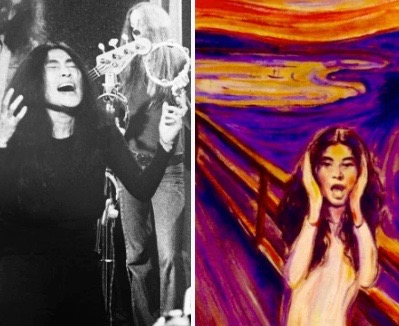
Madeline: What can you say with a scream that you can’t say with words?
Yoko: I think it’s extremely expressive of our emotional life. We sort of censor that, especially women. People don’t want to hear women screaming. They want to hear women sing a pretty song. That’s the idea in the male society. But we’re the ones who have the babies, we’re the ones who created the human race. So naturally women have big power, but we’re supposed to hide the power. – August 2013
The very first form of music that existed must have been just like Yoko’s – millions of years ago, before language, before instruments. The first prehistoric bird call was music. The grunt of a cave man, the first vocal expression of joy or sadness. The music of the future will probably resemble hers as well – whether it be made by humans or aliens. She has stated that she used her vocal technique to discover primeval expressions deep inside which metaphysically connect us with our souls.
“In my singing, I think I’m just expressing something that is desperate. That is something that you can’t express in words because It’s too desperate. Just like you scream when you are just drowning and just like you’re stuttering in your mind all the time before you talk… I want to deal with the world that is in subconscious. Not the world in consciousness but underneath the consciousness. That is where I am.”
– y.o. 1972
Nobody sings the blues like Yoko. She makes Howlin’ Wolf sound like he’s merely whining and complaining over the trivialities of love lost. Big deal if your woman done up and left you. Yoko’s blues are a much deeper blue than we can ever imagine. She sings the wordless truth of her world and ours.
Yoko’s entire life has been extraordinary. Her extremely lonely and disciplined childhood in a noble Japanese family of privilege was stifling. Showing any emotion or smiling was frowned upon. Restriction to abide by rigid social standards greatly affected her psyche and inspired her work. Yoko did not meet her father until she was two years old, as his banking job had taken him to America. Her narcissistic mother left her children in the care of servants. There were few children of her own age to play with.
Then came a horrific nightmare – America’s WWII bombings of Tokyo in March 1945 in which at least 100,000 people were killed. While their father was a P.O.W. in Saigon, the three young Ono siblings were evacuated from Tokyo to the countryside of Nagano where they were shunned by the farmers and by other children, and denied food because of their elite status. Yoko fed her young brother and sister by picking mulberries from the bushes. They were always hungry.
“I remember, when we were evacuated during the war, my brother was really unhappy and depressed and really hungry because we did not have very much food. So I said, ‘OK, let’s make a menu together. What kind of dinner would you like?’ And, he said, ‘Ice-cream.’ So, I said, ‘Good, let’s imagine our ice-cream dinner.’ And, we did, and he started to look happy. So, I realized even then that just through imagining, we can be happy. So we had our conceptual dinner and this is maybe my first piece of art.”
– y.o. 2013
When she returned home, Yoko viewed a decimated Tokyo – instilling a fragile sense of instability and impermanence. She became detached and developed a deeper intimacy with things intangible and imaginary. After years of loneliness, a failed marriage, abuse by a doctor and depression, there was a suicide attempt at age nineteen. Then a second marriage and a career in avant-garde art and performance (first in Japan and in New York). Yoko was greatly misunderstood – even by the avant-garde. She also encountered extreme prejudice from many angles.
Living in London, Yoko would later endure verbal attacks and sudden fame as the wife of a Beatle. As John Lennon’s wife she became a victim of sexism, blame and hatred by the masses – which led the couple to drugs. Yoko’s 8-year-old daughter was kidnapped by her father (Yoko’s second husband). Yoko’s young daughter was taken by her father. She did not see her child again for decades. And the worst was yet to come.
“The older you get the more frustrated you feel. And it gets to a point where you don’t have time to utter a lot of intellectual bullshit. If you were drowning you wouldn’t say: ‘I’d like to be helped because I have just a moment to live.’ You’d say, ‘Help!’ but if you were more desperate you’d say, ‘Eiough-hhhhh,’ or something like that. And the desperation of life is really life itself, the core of life, what’s really driving us forth. When you’re really desperate it’s phony to use descriptive and decorative adjectives to express yourself.”
– y.o. 1971
The death of John in 1980 – which happened right before her eyes – and the frightening aftermath including threats on her own life were almost unbearable. Yoko described the fragility of her voice during the recording of her first album since John’s passing (Season Of Glass, 1981).
“My voice kept cracking while I recorded the songs. I finally thought maybe I shouldn’t put the album out. Then it occurred to me there were probably many people in the world whose voices were cracking for many reasons. I realized my songs were the songs of the desperate. It was all right to show myself as how I was.” – y.o.
“She was struggling against so many layers; east and west, avant-garde and pop, man and woman, and such. She was fighting racism against Japanese women and Asian people. It wasn’t just a simple, hateful racism but a lack of understanding and xenophobia. She was also overcoming sexism because the 60s, as liberated as it was, was a boys’ club, especially in rock… she was overcoming and breaking so many barriers. She was opening so many doors. I think it was overwhelming for people because she was so ahead of her time…”
– Sean Ono Lennon, 2016
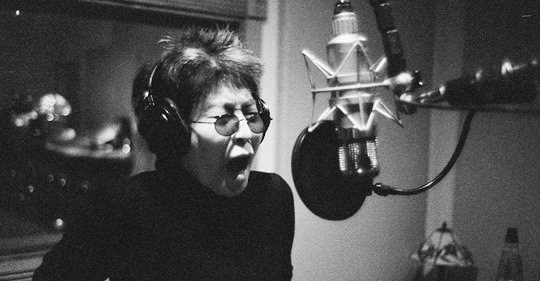
John and Yoko discussed vocalizing with composer John Cage in 1971:
Yoko: “In opera you have to carry your voice and keep it for a long time – like you have to learn to stay for 30 minutes or something, so you learn a way that you bring it up from here (stomach)…
Why would girls have higher voices than men? I noticed that people like the Japanese emperor and that – anybody or Hitler or somebody who’s is in a very highly pressured situation usually has a higher voice. And it seems like, you know when somebody would strangle you or something – aah aahaa and you have to make sort of a higher voice. It’s almost like because a woman is so suppressed in society so that they have no choice but to go higher, you see because you can’t relax. Now if you can relax your vocal cords (your voice goes lower).”
– Bank Street, NYC 1971 (filmed by Jonas Mekas)
https://m.youtube.com/watch?v=O6fYyw-XcfE
“The reason I was doing the howling was that friends of mine were all doing electronic music and that. It was to bring back the human thing.”
– y.o. 1969
The raw, intense vocalizations in Yoko’s wordless pieces are the aural equivalent of Abstract Expressionist art. They are derivative of hetai, a highly expressive Kabuki theater vocal technique which requires straining of the voice to convey emotions. She is articulating years of repressed emotional responses from traumatic experiences in her childhood and throughout most of her life. We can hear Yoko crying inside. We also hear her rage, courage and absolute sincerity – a release from years of suffocation. In the 1960s, she was conflicted with the avant-garde movement’s pretentious attitude toward art, feeling alienated because they considered her work too emotional and animalistic.
“The avant-garde guys didn’t use the voice. They were all just so cool, right?
And there was also this very asexual kind of atmosphere in the music.
And I wanted to throw blood.”
– y.o. 1992
BLOOD PIECE
Use your blood to paint.
Keep painting until you faint. (a)
Keep painting until you die. (b)
1960 spring
(Grapefruit)
“Somehow all the things that come out of me –
like words or music or whatever – seem to be not my doing.”
– y.o. 1986
Yoko’s mother was highly cultured in Japanese arts. She was a fine painter and played nine musical instruments. Her father was interested in Western art, but he gave up his promising career as a pianist for one in banking. As a child in Japan, Yoko received classical vocal and musical training at the prestigious Jiyu Gakuen (Learning Garden of Freedom) elementary school for children of wealth and of nobility. The school building was designed by Frank Lloyd Wright.
“I’ve learnt many styles of how the breath hits inside of your body and makes different sounds. The French way, The German way, The Italian way, the Chinese way, and the Japanese way. They are all different and very interesting that they are different.”
– y.o. 2017
Do you use any techniques from very old Japanese music in your vocal work? From which period?
“I have no idea which period. Ancient, I suppose. When I performed at Carnegie Recital Hall in 1961, and performed subsequently in Sogetsu Kaikan in Tokyo in 1962, I took and morphed my vocalization, consciously, from Kabuki and Noh. It was a very early avant-garde musical attempt made only by me at the time, and I was conscious of presenting something that had a familiar reference to it, to be understood more clearly. Otherwise, I usually fly away from all references. Therefore, I am not aware of what I am doing with my voice in terms of where it stems from. Some people told me that it was very close to the Spanish vocalization which couples their classic dance. Well, it’s quite possible, since we / I have had many lives, I’m sure. I might have been Spanish in one life.”
– y.o. 2017
“I think she was a revolutionary individual. One of a kind… Her conservative Japanese family didn’t quite understand her art… She felt very hurt by that. She was channeling a sort of fundamental avant-garde that was connected to Japanese folk singing which wasn’t a Western style of singing. If you look at the notation, it’s actually sort of an abstract poem. There was no Western notation. It would just go up and down. I think she’s very influenced by enka also in terms of her minor chords. Even Okinawa folk music. There’s something in her heart that’s very Japanese that’s not bound by Western conformist musical technique and theory. I think she applied that to her avant-garde theory to break through all the barriers. Pure expression, not limited music.”
– Sean Ono Lennon, 2016
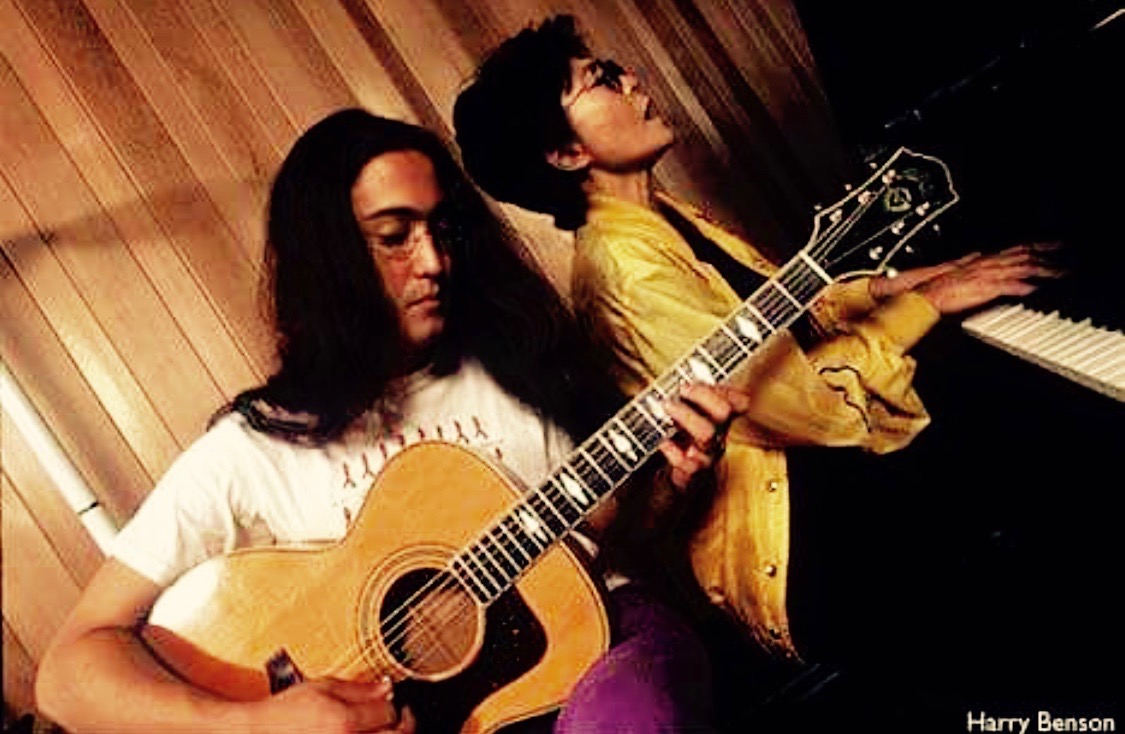
“One day, I was going through some bad stuff in my private life. I started to sing… and when I played it back on a tape recorder, I realized it was out of tune. The sound was distorted. It sounded like a song sung by someone who was mentally deranged, or at the limit of their emotion. And I realized I hadn’t liked those clear voices that (sang) the way you’re supposed to.”
– y.o. 1973
The power of a woman’s voice and the influence of women in general was highly inspirational in this childhood memory…
“My mother said: ‘Don’t you ever go to the servants’ rooms, it’s very bad, because they’re talking about things you don’t want to know.’ And sure enough, I just sneaked up and listened to it. And these two teenage girls, they were combing their hair and talking. ‘My aunt had a baby yesterday.’ ‘Oh, really?’ ‘Yes, and she was making noises. And I just thought: ‘Oh my god, a woman does that when she has a baby?’ There was a totally sanitised image about a woman, you know, they were supposed to be just pretty and make pretty noises. …So I was scared, and I sneaked back to my room, but that really stayed with me. And years later, I started to create all sorts of sounds.”
– y.o. 2016
The memory permeated her mind as Yoko grew older. She decided to emulate the sounds of childbirth. When she accidentally played the tape backwards, she replicated and rehearsed those haunting sounds. They perfectly illustrated her feelings, being disrespected as a woman. She began to carry the torch for the plight of all women.
“Sometimes I wake up in the middle of the night hearing thousands of women screaming. Other times just one woman tries to talk through me.”
– y.o. 2001
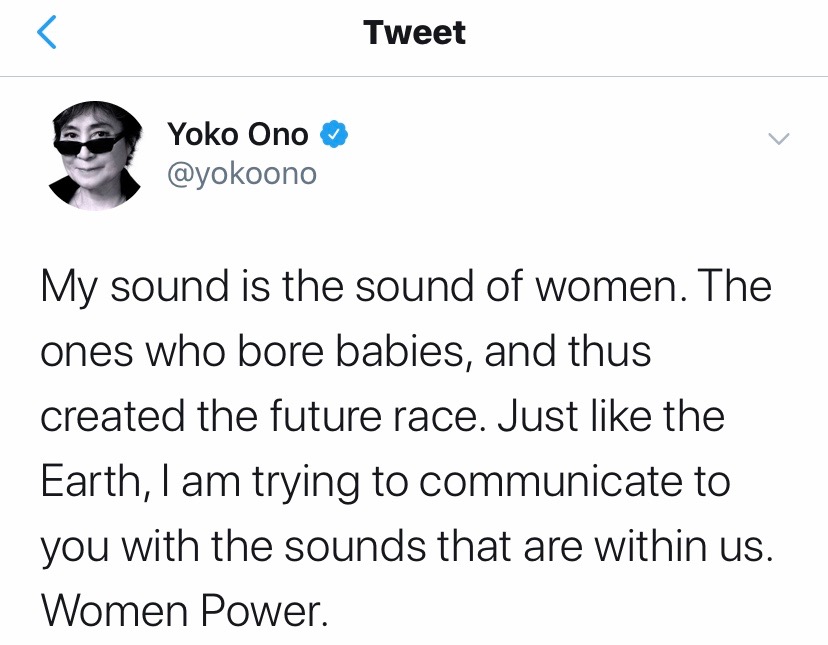
In the early 1960s, there was no such thing as avant-garde in Japan. Teachers were judging Yoko’s work based upon existing standards and did not consider it well. She began to search for like-minded artists and composers in America.
“There are unknown areas of sound and experience that people can’t really mention in words. Like the stuttering in your mind. I was interested not in the noise you make but the noise that happens when you try not to make it, just that tension going back and forth.”
– Yoko Ono and Her Sixteen Track Voice, Rolling Stone, December 1970
Yoko’s musical colleagues in the 1950s and 60s were jazz great Ornette Coleman and cutting-edge composers; Toshiro Mayuzumi (the first Japanese composer of electronic music), John Cage, Toshi Ichiyanagi (her first husband) and American avant-garde minimalist La Monte Young. These modernists, along with twelve tone composers Arnold Schoenberg, Alban Berg, Anton Webern, birdsong, drones and Buddhist chants were the soundtracks that would vibrate through all of her work.
“You see, I was doing music of the mind – no sound at all, and everybody sitting around just imagining sounds… But I felt stifled even with that, I was dying to scream, to go back to my voice. And I came to a point where I believed that the idea of avant-garde purity was just as stifling as just doing a rock beat over and over.”
y.o. 1971
Birdsong was an early inspiration.
At the age of four, Yoko attended a Japanese school called Judaku (Three Gardens, from which many famous composers graduated) where children were taught perfect pitch and harmony. One of Yoko’s school assignments was to translate the sounds of a symphony of birds into musical notation. She realized that it was impossible, at first thinking that it was her own shortcoming. She determined that there was a limitation in the way that we scored music – which lost the intrinsic magnificence of sound. This is the frustration behind all of Yoko’s work: diagrams cannot replicate the purity of an idea. To solve this problem, Yoko’s scores combine musical notation with words.
“Something got lost in the translation when you tried to notate the chorus of the birds. The score became a mere simplification of the natural sounds without its original intricate beauty… So I decided to combine notes with instructions.”
– y.o. 2001
Read more in my story: Yoko Ono – Birdsong
https://madelinex.com/2015/12/29/yoko-ono-birdsong/
Yoko published her first book Grapefruit in 1964. Much of it was written when she was nineteen and on the edge of madness. This instructional piece (actually a musical score) Voice Piece for Soprano is Yoko’s manifesto and her mantra.
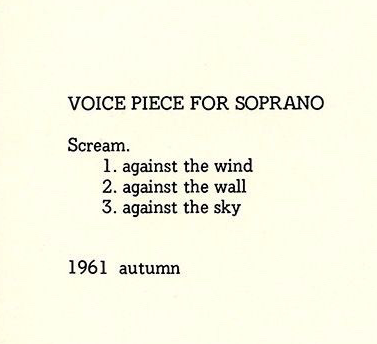
Voice Piece for Soprano was later performed live by Yoko at New York’s Museum of Modern Art in summer 2010 (as part of the Contemporary Art from the Collection exhibition. A microphone connected to high- volume speakers was left in the atrium for participants to recreate the piece intermittently, including Yoko herself. The volume was eventually turned down, as the “performances” startled museum visitors. This resulted in a headline in The Observer: MoMA Turns Down the Volume on Yoko.
“Grapefruit was like a cure for myself without knowing it. It was like saying, ‘Please accept me, I am mad.’ Those instructions are like that – a real need to do something to act out your madness. As long as you are behaving properly, you don’t realize your madness and you go crazy.”
– y.o. 1971
Voice Piece for Soprano @ MoMA, New York City, 2010
Watch:
https://www.youtube.com/watch?v=HdZ9weP5i68
Plastic Ono Band Bassist Klaus Voormann describes Yoko’s performance of ‘Don’t Worry Kyoko…’ at the Live Peace in Toronto festival in September 1969:
“She was doing everything she could possibly do to let the people know that war was terrible. By the end she was croaking like a dying bird. It was heartbreaking. I really heard tanks and soldiers and people dying. At the end, John came and embraced her. You could see exactly what he saw in her. He was proud of her and loved her, and in a way, he couldn’t care less about the public, but in another way, they were trying to spread this message.”
– Klaus Voormann, 2019
Live Peace In Toronto / Kenny’s Castaways NYC 1973
“From a very young age I used to read these Chinese stories about all the battles that they had…. I thought I was a warrior. A warrior with one sword, which was just my voice. I could go anywhere. I felt if you wanted me to do something with you, then let’s do it. And I’ll do it with my voice. That’s how I was when I arrived places. And when I met John… I was trying to create a new sound. The reason you create a new sound is because you’re not that interested in the sounds that are around you.”
– y.o. 2007
Yoko told Mojo (June 1997) that she was trained in Italian opera and German lieder, Pierrot Lunaire by Schonberg, Lulu by Berg, and was fascinated by Menotti’s way of using English. Despite the extreme backlash, Yoko followed her instincts. “I was really into bringing out the sound that comes out of the inner soul.”
“…I know that my voice became a joke in this society, so people are going to say-oh, no! But I had an incredibly good voice then, which was when I was around 17 or 18 and I had instructors who would say that I could probably make it as an alto, or mezzo-soprano. I started to dislike it so intensely. I was supposed to go to music school to study voice, and then eventually go to Italy. I thought, there’s something wrong with it. I didn’t enjoy singing other people songs. You know, I like good German lieder and all that, but I had an urge to compose…”
– y.o. 1986
The chances of random synthesis being so perfect during improvised pieces are slim, but Yoko often manages it – especially on the track ‘Why’ from her first solo album Yoko Ono Plastic Ono Band. ‘Why’ was John’s favorite piece of Yoko’s music. You cannot distinguish his guitar sound from her anguished vocal at the start. Yoko always knew that screaming was a healthy thing to do. In 1970 John was liberated by Arthur Janov’s Primal (scream) Therapy. John’s guitar style was liberated by Yoko’s vocalizing.
“What she’d done for my guitar playing was to free it the way she’d freed her voice from all the restrictions. I just played whatever I could to match it to her voice.”
– John Lennon, One Day at a Time, Anthony Fawcett
Alex Bennet, WMCA Radio:
“Here’s a track called ‘Why’ – so phone in and tell us what you think of it.” –
“It’s Today’s Tutti Frutti” John writes on a note pad.”

“I think that my mom brought my father to that place of pure, visceral expression. My mom was avant-garde and he was pop. She also gave that connection to a pure expression. Some of the ways my mom sings is almost like a baby crying. My father was very influenced by that and you can hear it in songs like ‘Mother’ on John Lennon Plastic Ono Band. He screams at the end. That was my mother’s influence. That was their new chapter, the new chapter of John and Yoko.”
– Sean Ono Lennon, 2016
“It’s my arrogance, but I thought my music was beautiful all along…
When I say beautiful …
well, the maximum beauty can be ugly to some people.”
– y.o. 2016
Madeline: For the soundtrack to your film Fly (1971) how did you get inside the mind of the flies to make the sounds that they would make while crawling on a naked woman’s body? I think you did a great job!
Yoko: Thank you! What I did in that situation is that I was feeling like I was a fly.
Read my story -Yoko’s Film: Fly
https://www.youtube.com/watch?v=r2GZjILfsP8
Just as Yoko inspired John Lennon to experiment, he instilled something in her that would drastically transform her amorphous music – a beat. Beginning with the seventeen-minute long ‘Mind Train’ and with ‘Midsummer New York’ on her album Fly Yoko began writing structured songs with evocative lyrics in a more conventional framework.
“I was doing very musically intricate things, in terms of rhythm and notation and how it moves. I thought it was comparable to someone like Schoenberg in terms of the structure of the music, and they didn’t hear that at all. They just said, ‘Yoko’s screaming!’ Is that terrible? Is it terrible? For some people it is. I don’t think that I am screaming ENOUGH. I mean, look at what’s happening in the world. But then the thing is, if I had screamed as much as is happening in the world, well, nobody’s going to listen to that.”
– y.o. 2013
Yoko wanted to make more music with John but that was not to be – until much later when they recorded an alternating dialogue of songs on Double Fantasy in 1980.
“If the world just, let us be, and gave us the space to be, we would have been great partners. Our partnership was still great, but mainly our energies were used in keeping the world from splitting us. And finally they succeeded, they split us in this big way. And if they had allowed us – I mean in 1980 were a full of it so we were thinking, all right, next is a musical on Broadway. We planned it all. There’s a lot of planning that we did. We didn’t get to do any of it. But also, what if we did, what of it? I still have a feeling that there would have been a lot of antagonism still.”
– y.o. 1986
Learning that Yoko was marrying a ‘working-class guy from Liverpool’ her family put out a press release in Japan saying, “We are not proud of Yoko Ono.” Yoko also felt restricted by her peers in the avant-garde community who considered her vocalizing too emotional.
“…Even in the avant-garde where they didn’t believe in lyrics, I used to do voice experiments. Now at the time, it was not well accepted even in the avant-garde because the New York avant-garde was into cool art, not hot and what I do was too emotional in a way they thought it was too animalistic. They were into controlling. They used to control the voice, rather than letting it out. And then I went to London, and I was making films and all that, and I met John… In one of the pieces I think I realized that I can sing three notes at the same time, which again I’m not doing by controlling it or anything. I just started doing it, and I said, “oh, this is great! “And later, one of those doctors who checks your throat said, there is a little sort of pea-sized something on my vocal cord, and maybe that’s the reason. I’m an early age I could sing a very wide range like alto, Mezzo-soprano, coloratura soprano – A big range, and I knew that. But then I didn’t know that I could do two notes or three notes at the same time. And when we found out about that we were very excited. So there’s some songs in the Plastic Ono Band album, if you listen to it you’ll hear the voice going like a harmonica, you know, three sounds.”
– y.o. 1986
“She becomes her voice, and you get touched.”
– John Lennon, March 1971
The intimacy, honesty and wisdom that Yoko openly shares in all of her work – especially in her music – is quite generous and always remarkable.
How is it to try and push that voice out of the body?
“It’s just something that’s within me, WITHIN me. And within a body-in-mind that has accumulated in 80 years, and that’s a lot, you know. I think it’s a fortunate thing that it’s been accumulated that long, it’s almost like discussing a good wine, you know. It took a long time to be what it is. I am very very caring about it in the sense that I try to bring it out, as it is.”
– y.o. 1999
Yoko always returned to making music. Her art was all about making us think, and changing the world for a better future. Music was her means of self-expression.
It seems like you are loved now. People really appreciate your work. Maybe in the past it was easy for people to criticize you because of what they thought you were. How has that shift been?
“Well thank god they criticized me instead of ignoring me…
Can you imagine if everyone was saying ‘she’s so good’.
I’d be dead by now!”
– y.o. 2016
“ …if you’re criticized then you can use it as an experience. Compliments, you can’t use.”
– y.o. 2013
***
WHISPERS
Ironically, much of Yoko’s work is done with a whisper. Many of her songs are sung delicately and softly, in her sweet and youthful speaking voice.
“It’s very interesting because Whisper Piece might be a scream, and the scream piece might be a whisper. In the big picture, in the whole of the planet, a scream is definitely just a whisper. And the 16 written whispers in Whisper Piece could add up to a big scream, conceptually.”
– y.o. 2010
Silence is the mother of all invention”
Some artists ignore small messages as trivia and wait to hear
a symphonic message hit them. I pick small messages as quiet as a whisper and make something out of it…
It works.
– Twitter, August 2013
Much of her work is created using silence (Soundless Music), bringing attention to negative space – as with her art.
“In the 30s… It was an incredible idea. It was homework; to transform the sounds into notations. So in my childhood I was always doing that in my mind. When the clock went ‘ding, ding, ding’ I repeated it in my mind afterwards. I did not count when the clock chimed, but after the chime stopped. That was what came naturally to me.”
– y.o. 2001
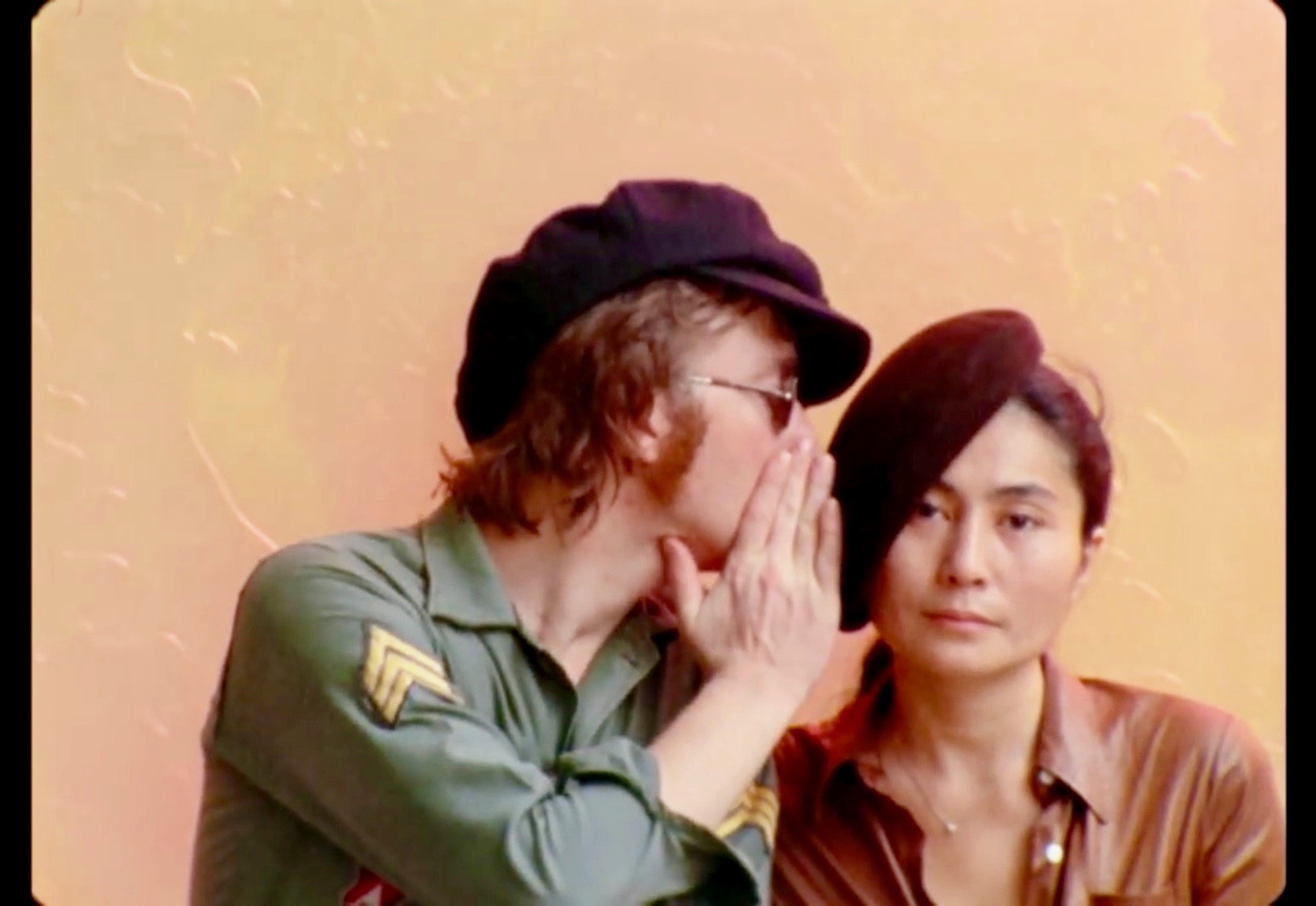

WHISPER PIECE
Whisper.
1964, Grapefruit
Yoko: “One time I did Whisper Piece in the Destruction in Art Symposium in 1966 in London. I was interested in the delicate way that things change – in that kind of destruction which, in a way, is more dangerous. I whispered a word and the word went around and got destroyed.”
– y.o. 2018
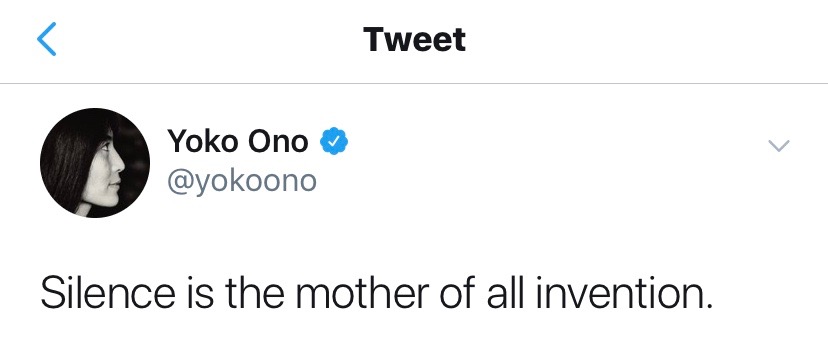
Yoko has written many more songs with lyrics than without. Her lyrical poetry is transcendent, imbued with elements of nature and is often prescient, as in these sacred lyrics from ‘Winter Song’ (1973).
The sun is old, the winter’s cold
The lake is shining like a drop of Buddha’s tears
The bed is shining like an old scripture
That’s never been opened before…
Mountains lie in a distance
Like the future we’d never reach…
“Everything that I write is usually something that will happen much later.”
– y.o. 2018
Yoko understood the frustrations of people who truly admired her music. When Onobox, a six-CD compilation was released in 1992 by Rykodisc, she was thinking of them…
“I think there’s a small group of hardcore fans who had to literally go through the same bashing that I went through just because they like my music. So I’m doing it for them, too, this box.I felt I really had to make sure that every note was right. For them.”
In 1986, Yoko invited me to a party in NYC for the publication of John’s book Skywriting by Word of Mouth. The DJ played Yoko’s song ‘Walking on Thin Ice’ and people were dancing! It was the first time ever that nobody ran out the door when her music came on! I said, “Yoko – look! Everyone is dancing!” She replied:
“Oh, well maybe I’m becoming too commercial!”
Knowing her, I am sure that she was NOT kidding!!
“I don’t accommodate the audience. I ask the audience to accommodate.”
– y.o. 2016
See my article: ‘Walking on Thin Ice’: Just a Story
https://www.youtube.com/watch?v=rhN7_NzdpGU
“I was driven. I felt that I didn’t want to get into self-censorship, which is the most dangerous thing you can do. Going against the stream of things is one of the most organic things that an artist does. I was a rebel. It’s an innate part of me to be a rebel. I couldn’t help being that.”
– y.o. 1995
“I think she should have done more howling…
Because it was so new before, it was really like the first
abstract picture you ever saw.
When somebody just starts going “woooowggh”…
I mean, we all accept Little Richard doing it in the 50s,
but someone who eliminates all the words altogether, it’s quite a trip.
To write, that’s easy. But to bloody howl, that’s hard.”
– John Lennon, 1973
“I came from a tradition of, ‘not concerned about the press,’ kind of ivory tower and a bit of snobbery and all that. On the stage, when the curtain’s up, you see me with my back against the audience. That was the attitude. And so everybody walked out of your concert – it’s a successful concert! A classic avant-garde idea.”
– y.o. 2003
“I didn’t think I am I going to get to number one on the chart or something because I didn’t even know what a chart was.”
– y.o. 2016
“I do the freaky songs so you know that I’m not lip-synching.”
– y.o. 1985
“Oh, now it’s very experimental, but we started a long time ago, it was a different attitude then.Now I get letters saying, “your thing is too middle of the road, what are you doing, we want to hear you screaming.”
– y.o. 1986
Yoko always returned to making music. Her art was all about making us think, and changing the world for a better future. Music was her means of self-expression.
“Music is like my security blanket. The first medium that I learned was music. When I was 4 years old my mother put me into an early music education school. That’s where they taught you perfect pitch and harmony and how to write music and all that. At that time, one of the homeworks was to listen to all the sounds and the noise of a day and transfer that into musical notes. My mind, my ears were trained to listen to sounds.”
“He woke me up from my mind game…”
“Obviously, I learned all about rock and pop from John. He also had very astute observations about people – on a very realistic level – that I didn’t have… Surrealism is very natural for me. It’s easier for me to describe my emotions in a surrealistic way, a symbolic way. But here was this guy who was very straightforward. If I was beating ‘round the bush, trying to say things with symbolism he’d say, ‘What do you really mean?’… You know how you can sometimes read a surrealistic poem and not know what they’re talking about? It’s just word-weaving. Or mind-weaving. You think, ‘Oh well. It seems very beautiful, but what’s the point?’ I would have headed toward that, maybe… I might have been a nice old middle-class spinster. Instead, John gave me back the body. He woke me up from my mind game. That was very healthy for me.”
© Madeline Bocaro 2020. No part of the text written by Madeline Bocaro may be copied, photocopied, reproduced, translated or reduced to any electronic medium or machine-readable form, in whole or in part, without prior written consent. Reproduction without the permission is prohibited. The author’s text on this site is protected by United States copyright law and may not be reproduced, distributed, transmitted, displayed, published or broadcast without prior written permission.
madelinex.com is a non-profit blog created for educational and research purposes.
Any content that may violate copyright or free usage laws will be removed immediately upon request.
(more below)
This story is an excerpt from my Yoko Ono biography
In Your Mind – The Infinite Universe of Yoko Ono
by Madeline Bocaro
An all-embracing look at Yoko Ono’s life, music and art – in stunning detail.
Read all about the book / see the reviews
Web Site:
HARD COVER books are only available at…
Conceptual Books
Contact: conceptualbooks@icloud.com
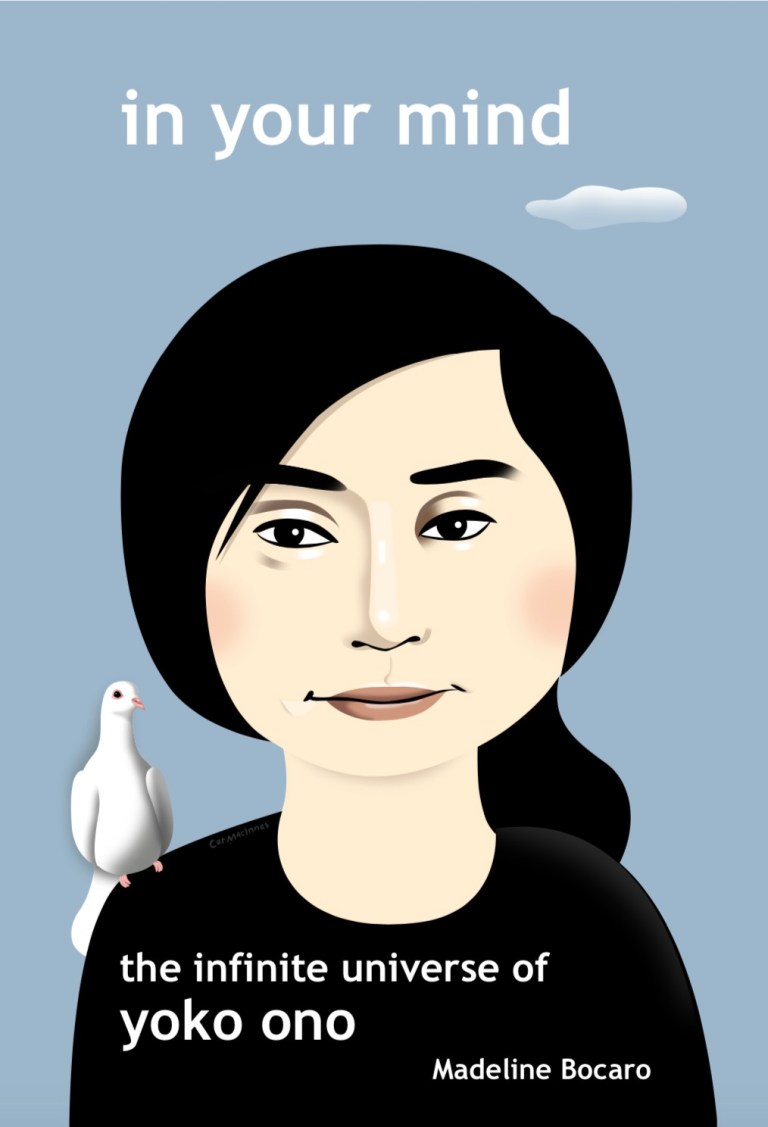
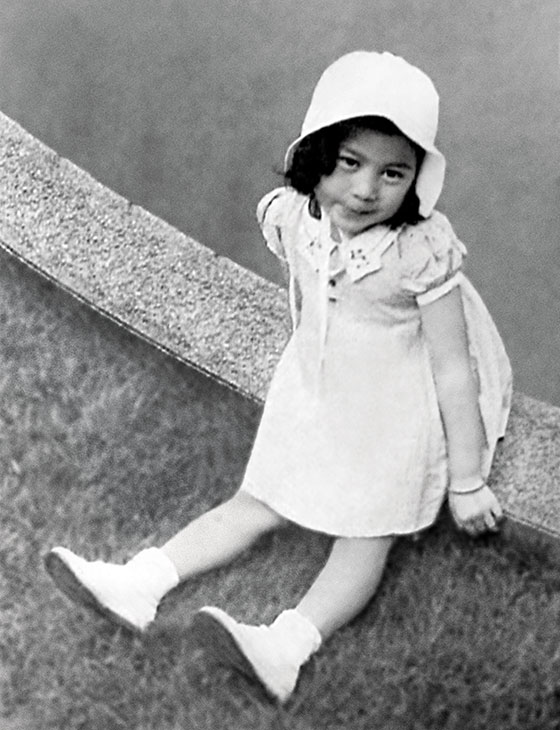
“I just went up to the stage and started singing.”
“I was 2 and a half years old. We were in San Francisco, my mother and I, visiting my father Yosemite Park had a small concert hall. Nobody was in there except my parent, who were resting, and an English lady who seemed to be enjoying my performance on the stage. I just went up to the stage and started singing. I kept singing all the Japanese songs I remembered clearly. I was singing for the English lady. Then I probably go tired and came down from the stage and went to her. She said I was wonderful and started to produce a piece of origami paper to fold. She kept saying, so you do this, and this, and this… very nicely and made a crane out of it. I was totally amazed. She was pleased that she amazed me. So she started to fold something else. I don’t’ remember what it was. But I remember how gentle and peaceful the lady was. This was just before Japan and America went to war.”
– New York Magazine, January 12, 2016
“… Even when I am rocking on the stage, they are totally hard on me. They demand the musical standard of a classic musician and attack me for the rhythm or some notes which are not precisely in tune. I am not concerned with what my voice is doing. If I was, what you experience would not be. My voice will be dead, once I am concerned about it, in the way you are asking me to. Go to a classical concert, if you want to hear a “trained” voice. What I escaped from when I was very, very young. I created my own niche. If I tried to present you classic music it won’t be what I created…
Let me be free. Let me be me! Don’t make me old, with your thinking and words about how I should be. You don’t have to come to my shows. I am giving tremendous energy with my voice, because that is me. Get my energy or shut up…”
Yoko Ono Lennon, NYC 18th February 2015 – on her 82nd birthday
(excerpt from Don’t Stop Me!):
“Just let me be free, so music will come out as my voice in the way it wants. Otherwise, it will not be beautiful. My music is unworldlily beautiful. It is a mixture of all the generations I went through on this planet: when I was born seeing the world with wonderment, when I was a wise infant, full of original ideas with not too much intimidation yet, when I was an energetic and rebellious teenager, when i was a sexy twenties, thirties, forties, fifties, sixties, seventies and now. Plus all the folk music of the world, the voice of people, never intimidated – and plus some music coming from another planet or planets! I respect that, cherish it, and am always thankful of note by note that comes in me and out of me.”
***
“I once advised in some writing of mine that what politicians should do is to first have a vocal lesson, and make their speeches by singing them.
That way you would know the purity of what they are saying.
I still think that is the political revolution we need.”
Twitter – October 22, 2018
‘Open Your Box’
Whenever I listen to Yoko, no matter what song it is, I’m thinking, “This is my favorite song!” My friends always say, “Oh is that the one that goes “Akkkk akkkk akkk akkk?!” I honestly answer, “YES!!!”
But this version of ‘Open Your Box’ is my all-time favorite!
There is an astonishing section on this longer version where Yoko’s voice soars, miraculously multiplying
to resemble a distressed flock of angry birds.
https://www.youtube.com/watch?v=mvlREZKvg9M
My story ‘Open Your Box’
https://madelinex.com/2012/04/12/yoko-songs-open-your-box/
FILM: Yoji Kuri Aos – **
In 1964, Yoko vocalized the soundtrack for this cool Yoji Kuri film (1964)
https://www.youtube.com/watch?v=M3pAHkkn81E&feature=youtu.be
https://www.awn.com/animationworld/keep-it-motion-classic-animation-revisited-aos
die drei kongos feat. yoko ono- scream one cut remix 2018
https://www.youtube.com/watch?v=h7JhBzdGpz0&feature=youtu.be
| Yoko Ono (@yokoono) | |
| 11/11/16, 4:21 PM
Dear Friends, |
|



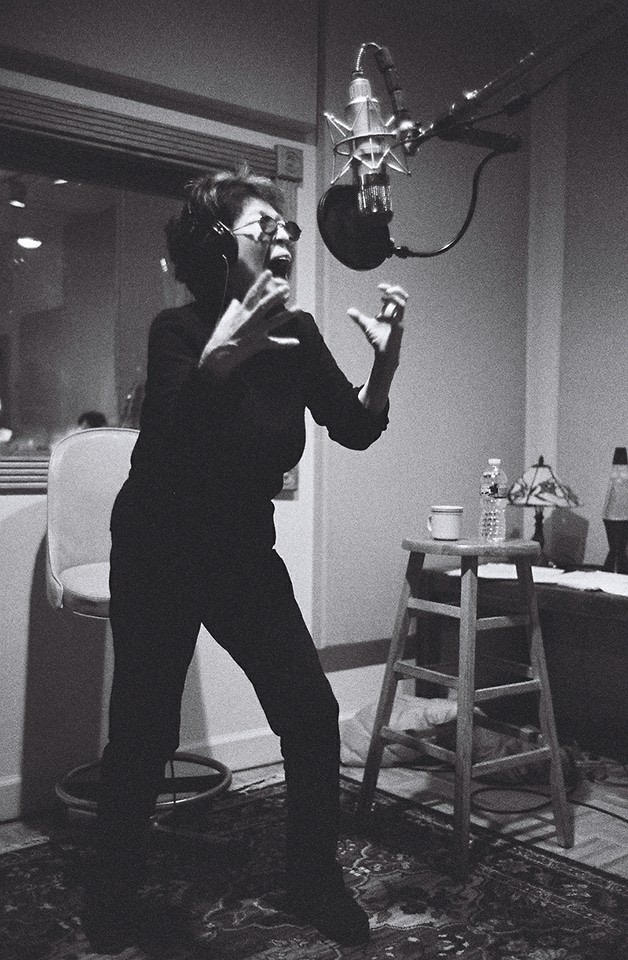

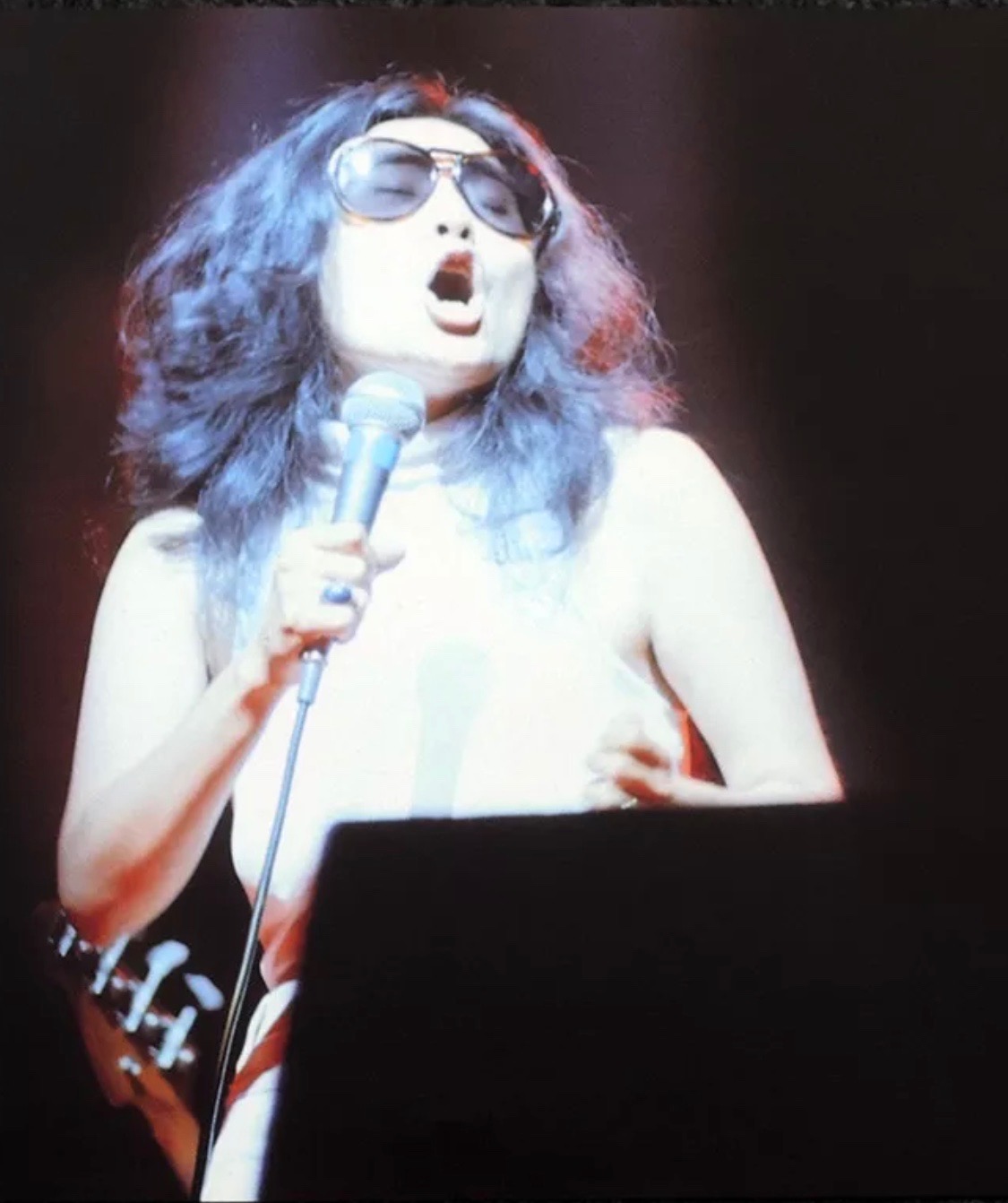

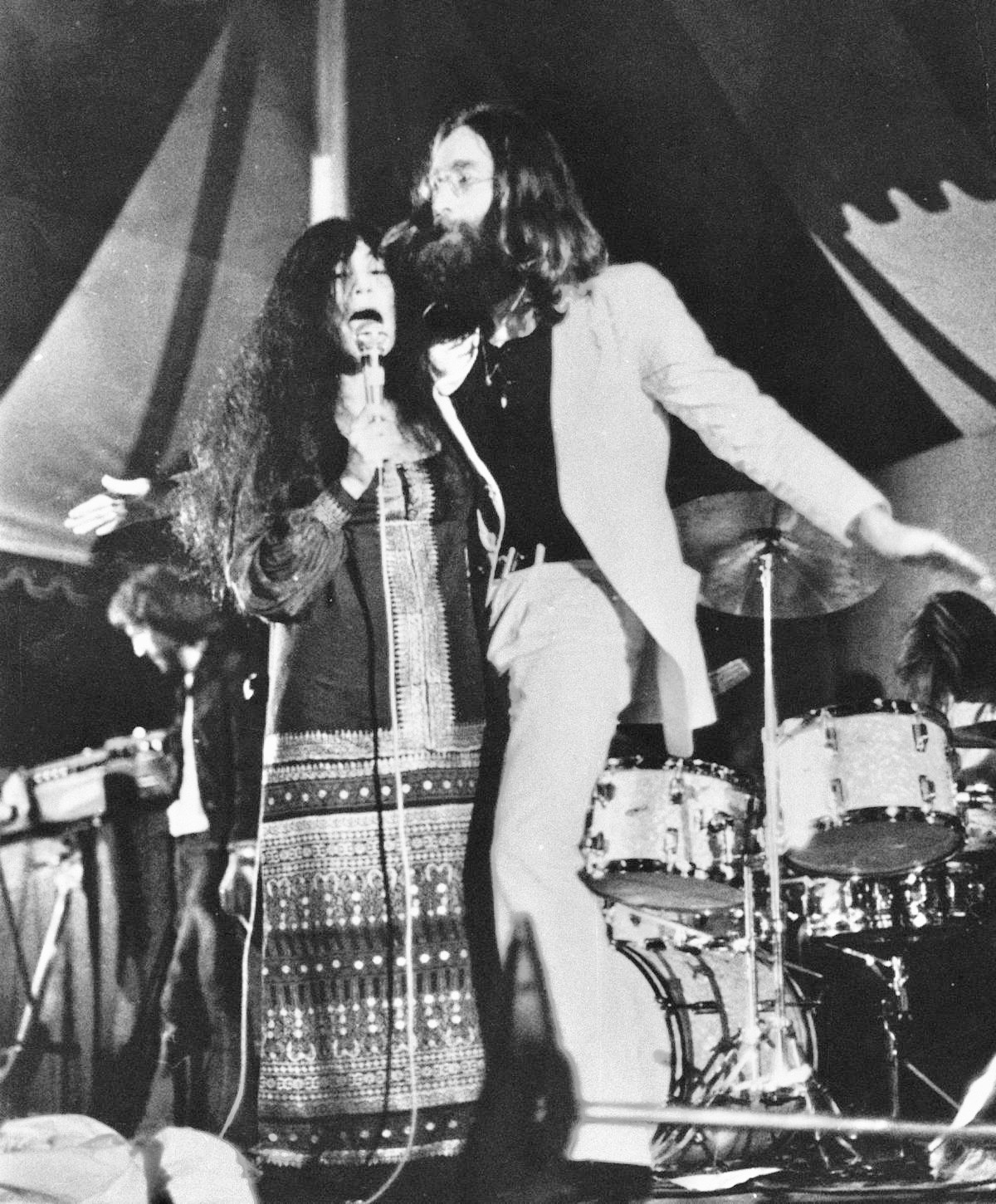
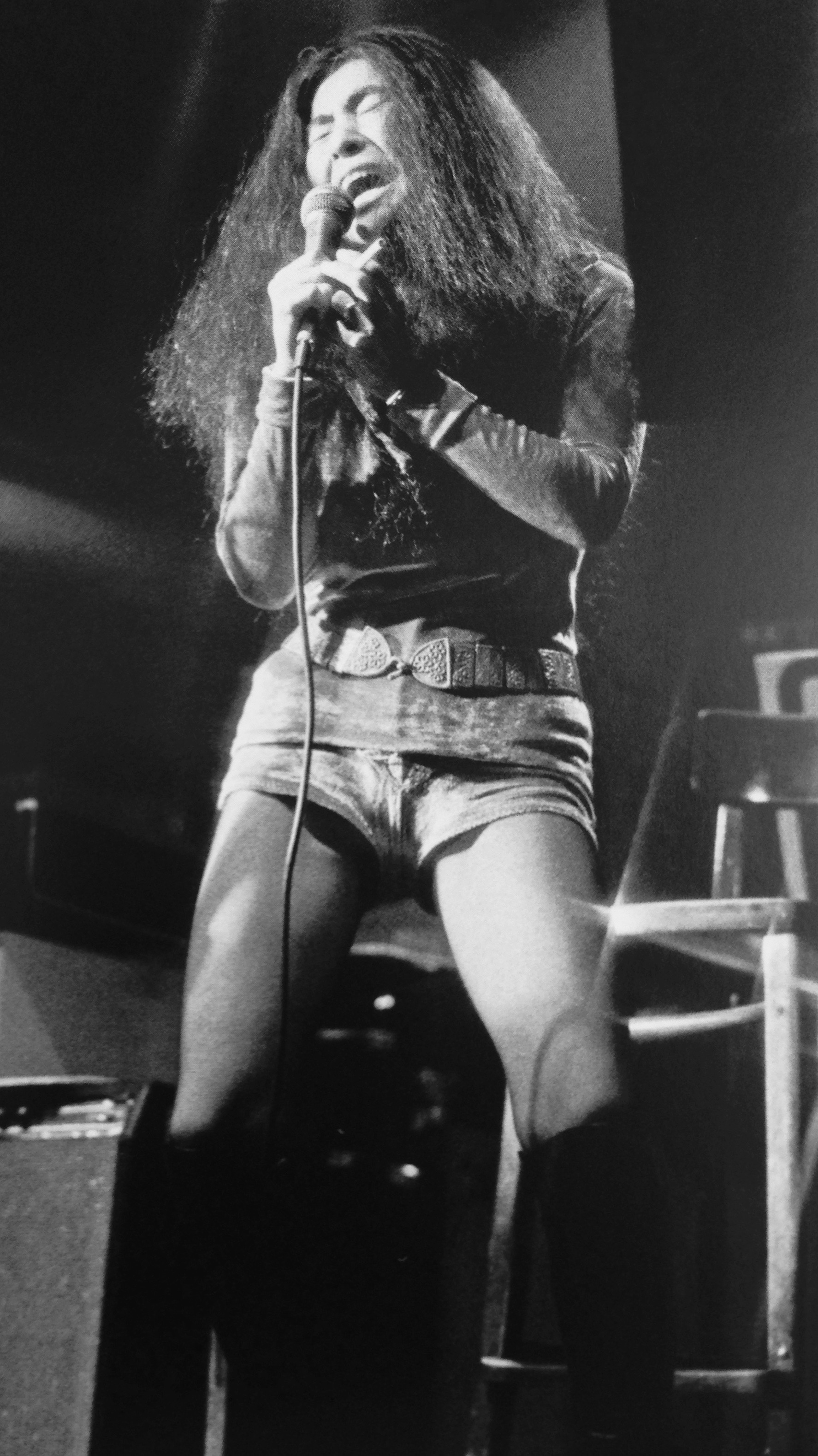

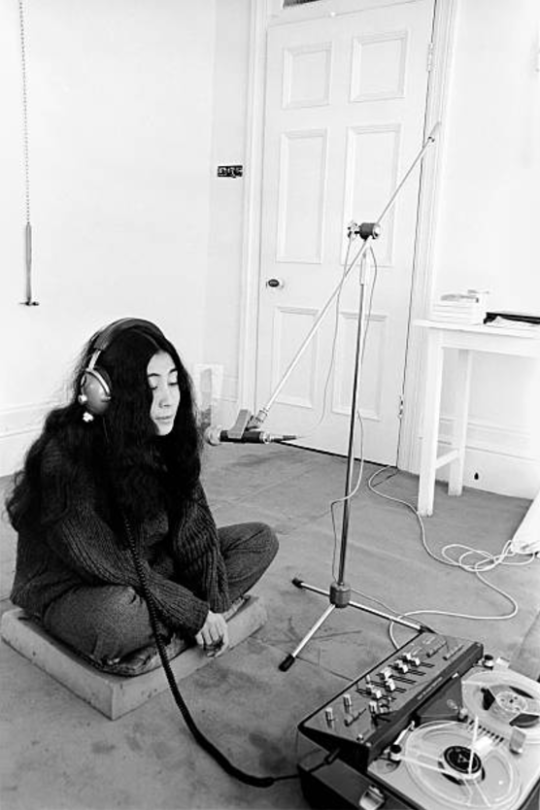




One thought on “Queen of The Scream”